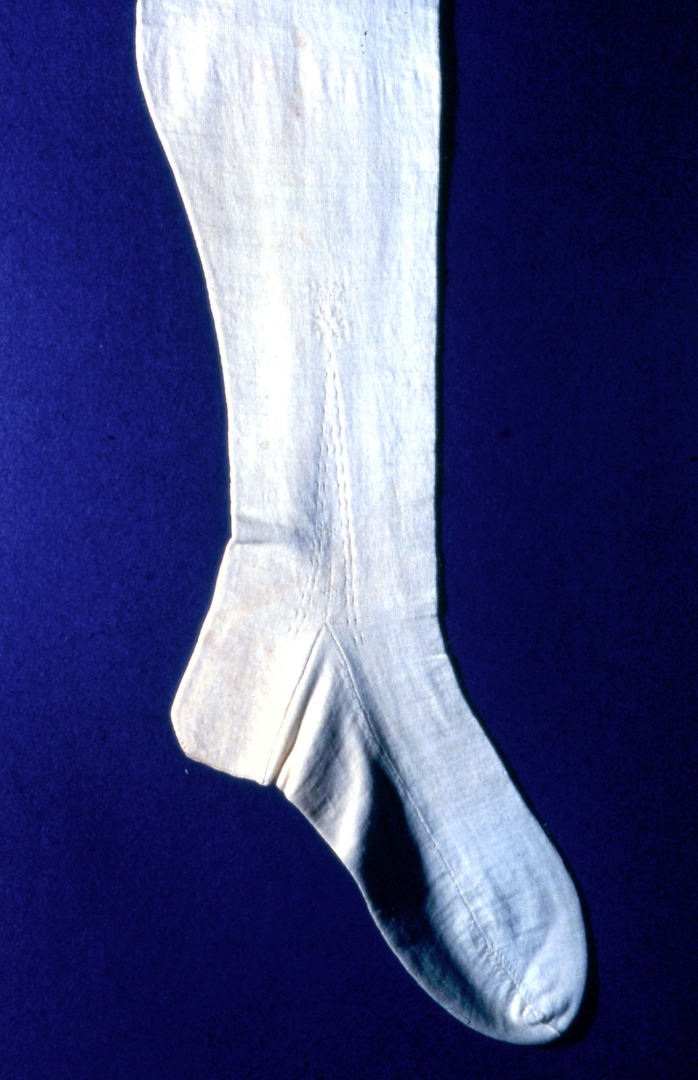Early Cotton Spinners
Securing a reliable supply of quality cotton yarn was crucial to the development and success of the cotton knitting industry in the East Midlands.

Knitted white cotton stocking
Lewis Paul made early attempts to machine-spin cotton in order to increase the supply of yarn. In 1738 he patented a machine for spinning cotton by drawing threads with rollers, but this was not a commercial success as the quality of yarn produced was still inferior to hand spun yarn.
Success with the spinning jenny
Around 1764 a Blackburn weaver, James Hargreaves, produced his 'spinning jenny'. The jenny took the principle of the spinning wheel and enabled the operator to spin several yarns at the same time. At first Hargreaves kept the invention secret and used the jenny at home, but in 1767 he produced further machines and made them available for sale. Soon, individuals who felt their jobs threatened by the new technology, broke into Hargreaves' home and smashed his machines.
To escape machine breakers in Lancashire, Hargreaves moved to Nottingham. Supported by a partnership of Nottingham hosiers, he set up a mill in Hockley and began to provide local hosiers with a reliable cotton yarn for knitting. The jenny was patented in 1770 and produced for sale to other spinners and hosiers. Demand for the jenny increased and manufacturers produced copies of Hargreaves' design. Hargreaves took the manufacturers to court to protect his patent, but the judge ruled that because the jenny had been used by the industry before being patented, people could make copies of it.
The arrival of Arkwright
At about the same time as Hargreaves, Richard Arkwright also left Lancashire for Nottingham. Arkwright had taken Lewis Paul's technology of spinning with rollers and tried to improve the quality of the yarn produced. Aware of the demand for quality yarn in Nottingham's knitting industry, Arkwright needed financial backing to establish himself there. Support initially was secured from a Nottingham hosier, Samuel Need. Arkwright's early attempts, like Paul's, produced poor quality, irregular yarn and eventually success was achieved by fluting the rollers.
Power was required to operate the rollers on the new spinning machine. The Trent did not provide sufficient power to drive a mill and the solution was to install a horse driven system in the Nottingham factory. However, the cost of maintaining such a system and expanding it to power further machines was prohibitive and an alternative was sought. Following in the footsteps of Cotchett and Lombe, in 1771 Arkwright moved to Derbyshire and established a string of mills with the support of Jedediah Strutt, a hosier and inventor of the Derby Rib Machine. Together they oversaw the construction of two mills at Cromford and one at Masson. The partnership between Strutt and Arkwright lasted until 1781.